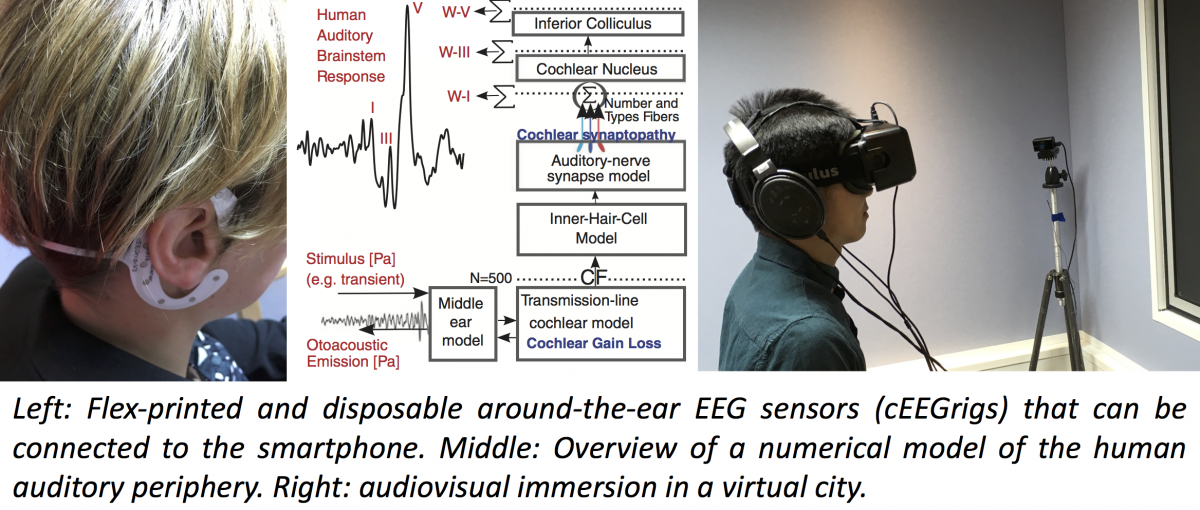Hearing Technology
- Computational model-based protocols for precision diagnostics of sensorineural hearing loss and hearing-aid algorithm design.
- Integrating auditory EEG technologies within wearables and smart-phone technologies.
- Machine-learning approaches to noise reduction and acoustic scene analysis.
- New technologies for auditory applications, soundscapes and virtual acoustics.

ERC project: Robust speech encoding in impaired hearing (RobSpear)
- Oldenburg University (Prof. Debener)
- Aalto University (Profs. Pulkki)
Model Code:
- The 2012 cochlear + OAE model (Fortran/Matlab)
- The 2015-2016 cochlear + OAE model (Matlab/Python)
- The 2015-2016 cochlear + Auditory-nerve model (Matlab/Python)
- The 2018 model: human cochlea+OAE+AN+ABR+EFR. The code is also available on our HearingTechnology GitHub, email me your account and I'll add you as a collaborator (s.verhulst@ugent.be)
Baby D and Verhulst S (in review). Biophysically-inspired features improve the generalizability of neural network-based speech enhancement systems. Interspeech
Verhulst S, Altoè A, Vasilkov V. (2018) Computational modeling of the human auditory periphery: auditory-nerve responses, evoked potentials and hearing loss. Hearing Research, 360, 55-75.
Saremi A, Beutelmann R, Dietz M, Kretzberg J, Ashida A, Verhulst S (2016) Comparative Study of Seven Auditory Filter Models of the Human Cochlea. Journal of the Acoustical Society of America 140 (3), 1618-1634.
Verhulst S, Bharadwaj H, Mehraei G, Shera CA, Shinn-Cunningham, BG. (2015). Functional modeling of the human auditory brainstem response to broadband stimulation. Journal of the Acoustical Society of America 138 (3): 1637-1659.